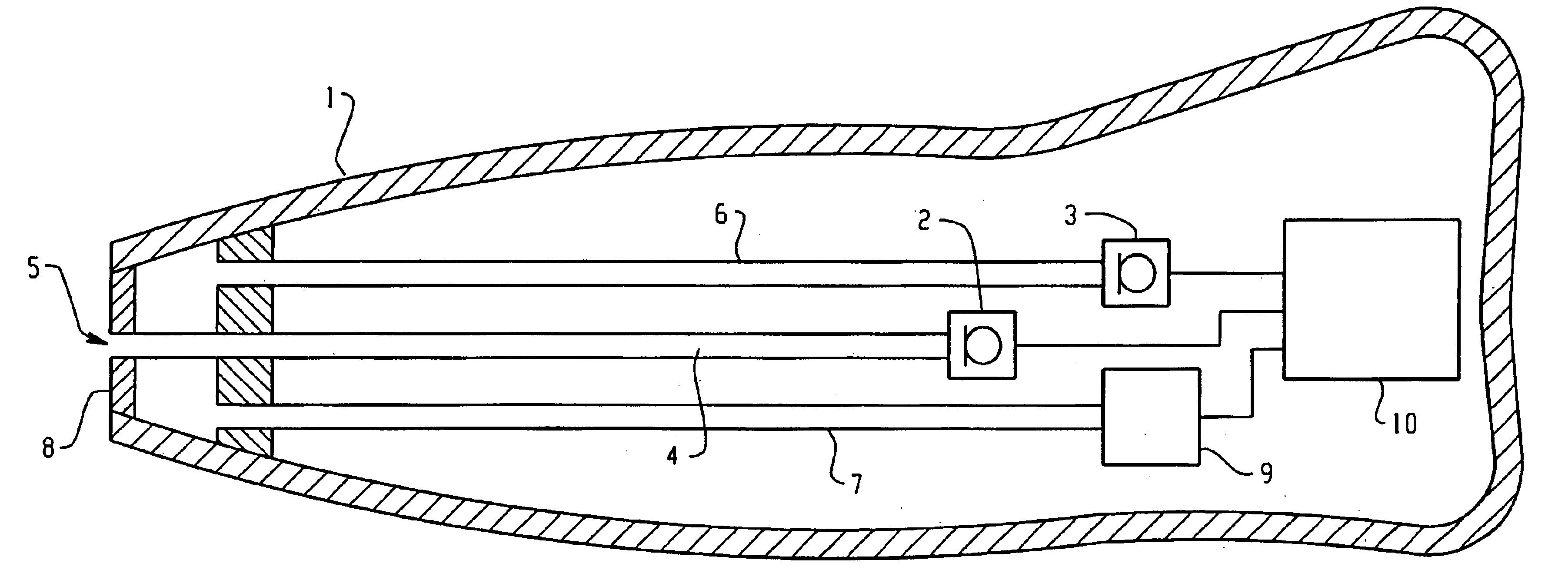Method for the recording of acoustic parameters for the customization of hearing aids
a technology for hearing aids and customization, applied in the field of hearing aid customization methods, can solve the problems of many uncertainties, complicated adaptation of hearing aids to individual acoustic conditions, and great pain
- Summary
- Abstract
- Description
- Claims
- Application Information
AI Technical Summary
Benefits of technology
Problems solved by technology
Method used
Image
Examples
Embodiment Construction
In the drawings, FIG. 1 shows the longitudinal section of a preferably miniaturized hearing aid. The front part of the shell with the shape of the ear canal will be slid into ear canal (not represented in the figure). At least two microphones 2 and 3 are arranged within the shell, The first microphone 2 is connected to the opening 5 of the shell 1 over an open channel 4 This microphone 2 serves for the measuring of the effective sound pressure in the ear canal. The second microphone 3 is also connected to the opening 5 over a channel 6 in which an acoustic resistance 8 is arranged between the outside of the opening 5 and the channel 6. In the case in hand the acoustic resistance 8 consists preferably of a circle disk of porous sinter bronze with a defined, calibrated acoustic resistance value Ra.
A listener 9 delivers the amplified outside sound or an artificial, broadband measuring signal to the channel 7 which is brought together with the channel 6 before the acoustic resistance 8....
PUM
 Login to View More
Login to View More Abstract
Description
Claims
Application Information
 Login to View More
Login to View More - Generate Ideas
- Intellectual Property
- Life Sciences
- Materials
- Tech Scout
- Unparalleled Data Quality
- Higher Quality Content
- 60% Fewer Hallucinations
Browse by: Latest US Patents, China's latest patents, Technical Efficacy Thesaurus, Application Domain, Technology Topic, Popular Technical Reports.
© 2025 PatSnap. All rights reserved.Legal|Privacy policy|Modern Slavery Act Transparency Statement|Sitemap|About US| Contact US: help@patsnap.com



